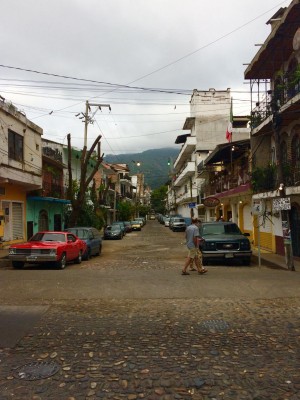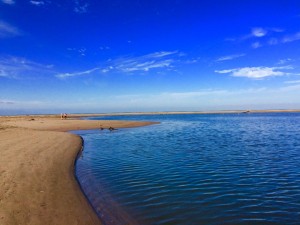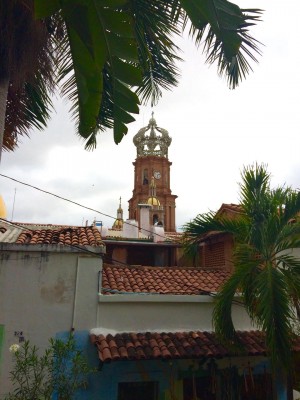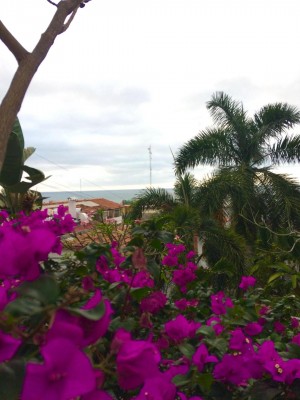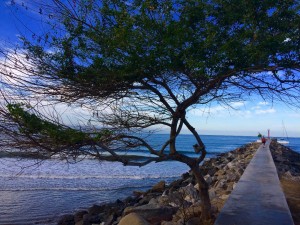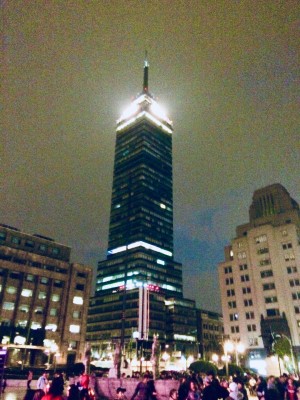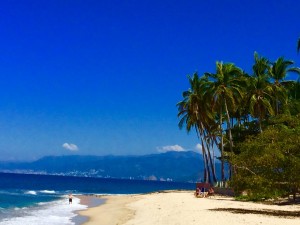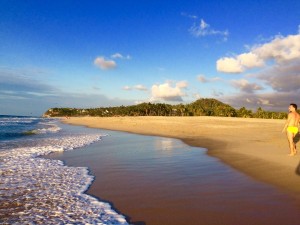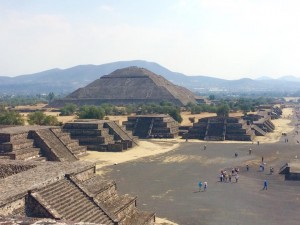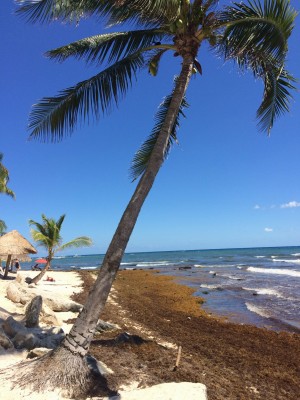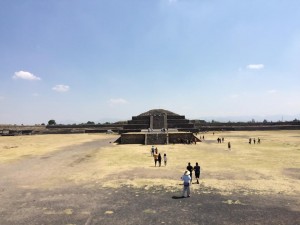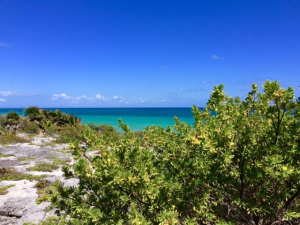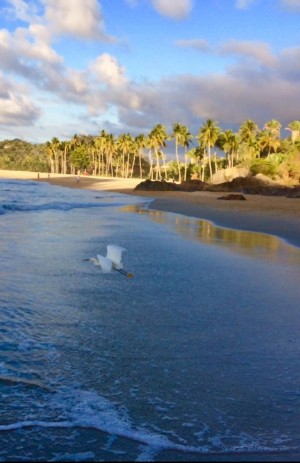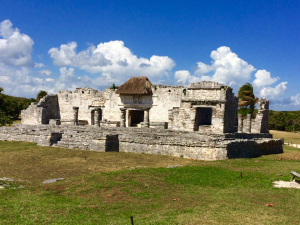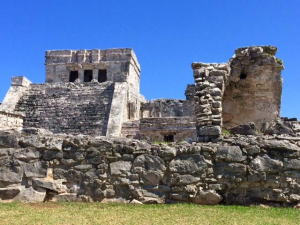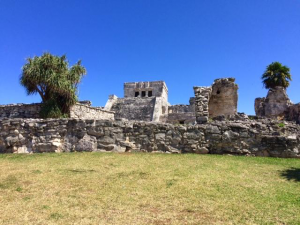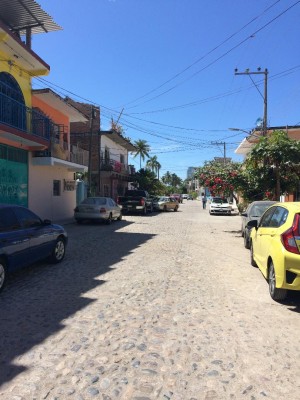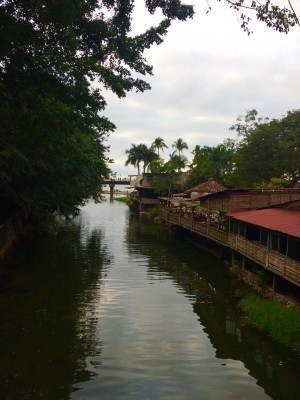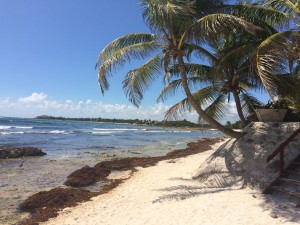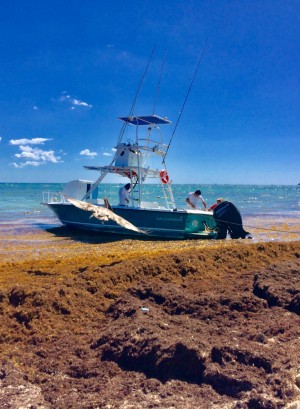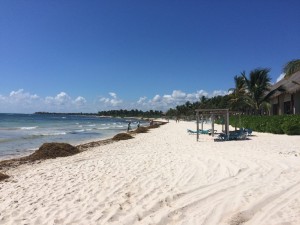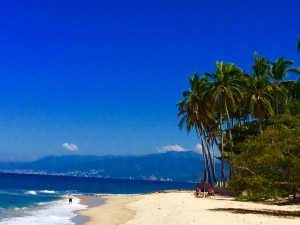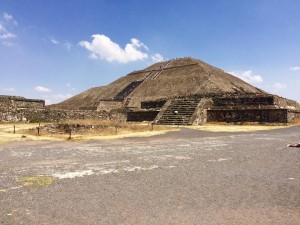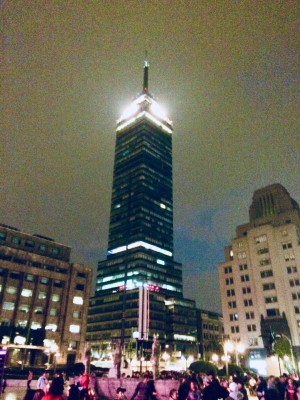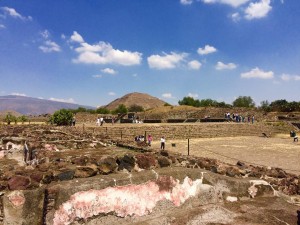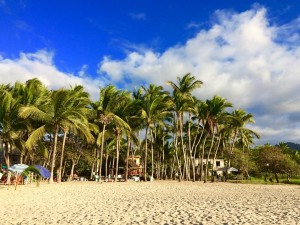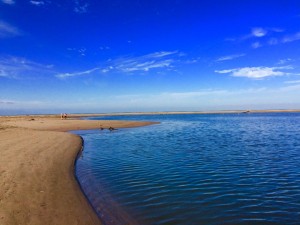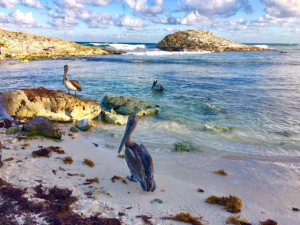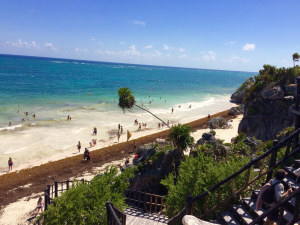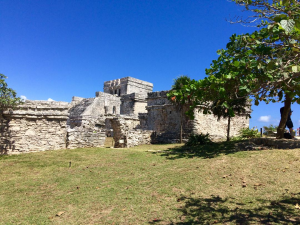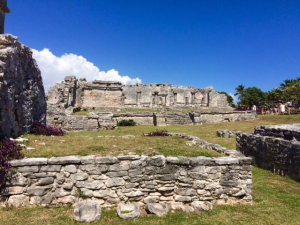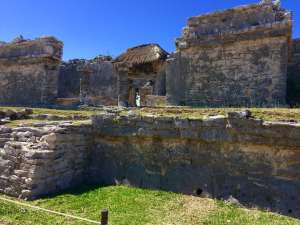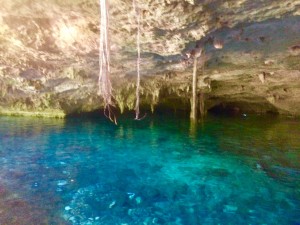For the Italian version, please, scroll down.
February – what better time to get away from Berlin and reach a warm destination, with white beaches and crystal clear water?
This year, whilst everyone else is curling up to get away from the cold, long days of the Northern European Winter, void of any light, I’ll be putting my sunscreen on to protect my white skin from sunburn.
It took some time before I decided to leave, but after many years of hesitation, I finally managed to organize a long journey to a distant and exotic destination.
When I moved to Berlin, I was so enthusiastic about the city that I was slowly discovering that I did not even feel the desire to travel. Then, with the succession of Winters, even if the desire to escape a bit from the cold and break the routine cropped up, I had to put it on the side-burner due to my commitments and responsibilities that I took on to build myself a solid work life. Year after year, I have therefore always postponed the trip, waiting for the right time to take a few weeks of vacation. But as with anything in life, the right moment does not appear all by itself, we must create it hoping that everything else aside falls into place. Even now, with my flight ticket already purchased, I am worried that my absence could compromise what I have accomplished with effort and tenacity over the years. So, waiting to leave, I keep repeating to myself „nobody is going to die“, hoping that my mantra serves to exorcise my fears.
My destination: Mexico
After a short stay in Los Angeles, I went to Puerto Vallarta, a small tourist resort on the Pacific coast, in the state of Jalisco.
Two dear friends of mine were awaiting me and during the following days showed me round the city: the church of Nuestra Señora de Guadalupe, the malecón and Bahia de Banderas with its various, each with its own personality.
The differences with Berlin, needless to say, are as large as an abyss. It is not simply the climate, the colors and the local fauna, but also the people, their habits and their lifestyle.
From many points of view it is evident that Mexico is deeply split in two. It may seem like a superficial generalization but even from talking to the Mexicans themselves, they confirm that on one side there are the rich – living in big houses, with service staff and luxuries that many people in Europe could not afford – on the other side there is the rest of the world: those who wash your car when you park, who fill your shopping bags when you go to the supermarket, who sell fruit, refreshing drinks and local delicacies on every street corner, and many others who work hard, for many hours a day earning unfairly low wages and salaries.
Maybe it’s the price to pay for living in such a beautiful place where, even in February, it is possible to swim in turquoise waters and rest in shade of a palm tree.
However, the difficult working conditions do not in any way affect the festive and sunny spirit of the Mexicans who (another notable difference when compared with the Germans) seem to have no problem with the noise and with a bit of chaos. It seems as though the louder the music, the more vociferous it is, the more the people tend to enjoy themselves.
During the week I spent in Puerto Vallarta and especially thanks to the my friends’ hospitality, I not only got to know a little about their world and their life in Mexico, but I also visited other tourist destinations located between Jalisco and Nayarit such as: San Francisco, a fishing village better known as San Pancho, which has become a famous tourist resort; Sayulita, another delightful village where a local craft has developed so much that it now attracts many gringos from North America and Canada; Punta de Mita, a mountain peninsula where the jungle reaches the beach and, beyond this, several other places with spectacular natural landscape.
The real revelation was Mexico City
Although I had planned to spend only three days in the capital, then flee back to the coast, and despite all the recommendations I received before leaving from friends and acquaintances who depicted the city as an interesting but dangerous place, my experience was absolutely positive and exciting.
In Mexico City, my impressions of Mexico that I had from Puerto Vallarta were partly confirmed, and in part softened a little.
Despite some strong contrasts, I found here that the distinction between social classes was less evident. Undoubtedly there is a greater stratification of society, even though the city is more varied: there are beautiful and green residential neighborhoods, working class areas, neighborhoods that are more alternative and young, the crowded and tourist center and many other parts of the city that I didn’t get to know.
But despite the most obvious climatic or ‚character‘ distinctions, Mexico City is not all that different from Berlin. As is the case in the German capital, here there are also thousands of people that come to look for work. Many young people from other regions or other countries – mainly from South / Central America – come to study and many gringos spend their retirement years in luxurious accommodation. Even the cultural scene, taking into my account my limited experience, seemed to me to be very rich and active. Between concerts, shows and exhibitions you are completely spoiled for choice because apparently there aren’t any shows or tours that do not stop off at the Federal District.
In addition to the many major museums, such as the unmissable Museo Nacional de Antropologia, with its 23 rooms of archaeological and ethnographic disvories; the Tamayo Arte Contemporaneo Museum; the Museo de Arte Moderno – all three located in the Chapultepec forest -, and the many museums which are in the center, such as the Museo Nacional de Arte (MUNAL), where you can visit the vast collection dedicated to Mexican history from the 16th century to the present day; the Palacio de Bellas Artes, the cultural center and city’s most important theater; Antico Colegio de San Ildefonso, considered to be the cradle of ‚muralism‘, there are many centers dedicated to the promulgation of art. Also located in the Chapultepec forest there are, for example, the Centro Cultural del Bosque (INBA), dedicated to scenic art, and the Auditorio Nacional, one of the most famous venues in the country. Additionally, in the south of the city there are: the Univérsidad Nacional Autonoma de México UNAM, with its Cultural University Center where the Museum of Contemporary Art (MUAC) is located; the Nezahualcóyotl Hall, home of the Philharmonic and the Symphonic Orchestra de Minería; the Miguel Covarrubias Hall, which hosts theater and dance performances and the Juan Ruiz de Alarcón theater. In the picturesque neighborhood of Coyacan, not far from the Casa Azul of the famous painter Frida Kahlo, there is the Cineteca Nacional, dedicated to the promotion and diffusion of cinema and in the confined neighborhood of San Angel you can also find the Centro Cultural Helénico. There are also festivals and art events of all kinds such as: Zonamaco, the international contemporary art fair held every year in February and August; Corona Capital, which, thanks to the participation of the USA‘ and European major bands, is one of the most famous rock and alternative music festivals in Latin America, and Vive Latino, the most important Ibero-American Festival of music culture which showcases Spanish lyrical rock.
So, apparently, Mexico City, as far as art and shows are concerned, has no need to be envious of Berlin, the European capital in terms of culture. After diving into the Federal District and a memorable visit to Teotihuacan and its pyramids, my vacation continues at the sea.
The last stop of my trip is the Yucatan peninsula
From Cancun to Tulum, passing through Playa del Carmen, I dedicated the last days of my stay in Mexico to the Mayan ruins and the beautiful natural attractions of the area.
In the archaeological complex of Tulum I visited El Castillo, the Templo del Dios Viento and the other ruins that lie overhanging a beautiful beach with typical palm trees and white sand.
In Akumal (which in the Mayan language means place of the turtles) I bathe with two large turtles that were swimming a few centimeters deeper than me, whilst I deliberately kept close to the surface to observe them and all their movements. I saw them rise to the surface, lengthen their necks to breathe and then plunge again in search of food.
I dived into the transparent water of the Cenotes Dos Ojos – natural caves with fresh water – and I visited many Caribbean beaches that make me forget about the Berlin Winter.
In this part of Mexico, my perspective and my considerations on places and people changed again.
Despite the absolute beauty of the places I visited, mass tourism has totally deprived of the cities and the lives of the inhabitants from their authenticity. Everybody slavishly devotes themselves to pleasing tourists. Restaurants and shops – the same ones that you find all over the world – are lined up one after the other without interruption. It is not even possible to walk on the seafront, the Malecón has been sacrificed to allow many starred hotels to have their own access directly to the beach.
Apparently the problems of globalization have not spared even this part of the world. If in Berlin we try to resist building speculation and the process of gentrification, here I have the impression that there is not even the awareness of the change that taking place and irremediably disfiguring a corner of paradise. It almost feels like you are not in Mexico anymore.
In any case, the analysis of my holiday is absolutely positive. I get back to Berlin happy with experience I’ve had, filled with enthusiasm and recharged energy and with the hope of having left the Winter behind.
Having arrived in Berlin, happy to embrace friends and resume my life once again, I discover that I still have to endure the cold for a while, but at the Babylon they are showing Frida Kahlo Pictures at an exhibition, a live concert with a projection of images of the work and the private life of the painter, which makes Mexico seem a little less far away…
Italian version
Febbraio, quale periodo migliore per scappare un po’ da Berlino e raggiungere una destinazione calda, con spiagge bianche e acqua cristallina?
Quest’anno, mentre tutti si stringono nelle spalle per resistere al freddo e alle lunghe giornate senza luce dell’inverno nord europeo, io sarò a cospargermi il corpo con creme solari per proteggere la mia pelle bianca dalle scottature.
C’è voluto del tempo prima che mi decidessi, ma dopo molti anni e tentennamenti, sono riuscito finalmente a organizzare un lungo viaggio verse mete lontane ed esotiche.
Quando mi sono trasferito a Berlino, ero a tal punto entusiasta della città che andavo piano piano scoprendo, che neanche avvertivo il desiderio di viaggiare. Poi, con il susseguirsi degli inverni, anche se la voglia di allontanarmi un po’ dal freddo e di rompere la routine si è fatta sentire, ho dovuto necessariamente metterla in secondo piano rispetto a impegni e responsabilità che prendevo e alla necessità di costruirmi una solida realtà lavorativa. Di anno in anno, quindi, ho sempre rimandato, aspettando che arrivasse il momento giusto per prendere qualche settimana di vacanza. Ma come in tutte le cose, il momento giusto non arriva da solo, bisogna crearlo sperando che tutto il resto vada per il verso giusto. Persino adesso, con il biglietto aereo già comprato, sono preso dal timore che la mia assenza possa compromettere ciò che ho realizzato in questi anni con sforzi e tenacia. Quindi, nell’attesa di partire, non faccio che ripetermi “non morirà nessuno”, sperando che il mio mantra serva ad esorcizzare le paure.
La meta del mio viaggio è il Messico
Dopo un breve soggiorno a Los Angeles, mi reco a Puerto Vallarta, una piccola località turistica sulla costa pacifica, nello stato di Jalisco.
Ad aspettarmi ci sono due cari amici che nei giorni successivi mi mostrano la città con la chiesa di Nuestra Señora de Guadalupe, il malecón e Bahia de Banderas con le sue spiagge dalle differenti personalità.
Le differenze con Berlino, neanche a dirlo, sono abissali. Non si tratta solo del clima, dei colori e della fauna locale, ma della gente, delle loro abitudini e del loro modo di vivere.
È evidente che sotto tanti punti di vista il Messico sia profondamente spaccato in due. Può sembrare una generalizzazione superficiale ma, anche parlando con gli stessi messicani, si ha la conferma che da un lato ci sono i ricchi, che vivono in case grandi, con personale a servizio e lussi che in Europa non in tanti potrebbero concedersi, dall’altro il resto del mondo: coloro che ti lavano la macchina quando parcheggi, che ti riempiono le buste della spesa quando vai al supermercato, che vendono frutta, bevande dissetanti e specialità della cucina locale a ogni angolo della strada, nonché i tantissimi che lavorano duramente, per molte ore al giorno ma con stipendi e paghe ingiustamente bassi.
Forse è lo scotto da pagare per vivere in posti così belli, dove persino a febbraio è possibile fare il bagno in spiagge dal mare turchese e riposarsi all’ombra delle palme.
Comunque le difficili condizioni lavorative non intaccano minimamente lo spirito festoso e solare dei messicani che, altra differenza notevole con i tedeschi, pare non abbiano alcun problema con il baccano e con un po’ di confusione. Sembra quasi che più la musica sia alta, più il vociare sia concitato, più si divertano.
Durante la settimana trascorsa a Puerto Vallarta, specialmente grazie all’ospitalità dei miei amici, non solo ho avuto modo di conoscere un po’ il loro mondo e la loro vita in Messico, ma ho visitato anche altre mete turistiche situate tra Jalisco e Nayarit come: San Francisco, un paesino di pescatori meglio conosciuto come San Pancho, divenuto una famosa località turistica, Sayulita, un altro delizioso villaggio dove si è sviluppato un artigianato locale che richiama tantissimi gringos dal nord America e dal Canada, Punta de Mita, una penisola montuosa in cui la giungla arriva sino alla spiaggia e diversi altri posti dalla natura spettacolare.
La vera rivelazione è stata Città del Messico
Sebbene avessi in programma di trascorrere nella capitale soltanto tre giorni, per poi fuggire di nuovo sulla costa, e nonostante tutte le raccomandazioni ricevute prima della partenza da amici e conoscenti che mi dipingevano la città come un posto interessante ma pericoloso, la mia esperienza è stata assolutamente positiva ed entusiasmante.
In Città del Messico, le impressioni ricevute a Puerto Vallarta in parte trovano conferma, in parte sembrano smussarsi un po’.
Nonostante alcuni forti contrasti, qui la distinzione tra classi è meno evidente. Indubbiamente c’è una maggiore stratificazione della società. Anche la città è più varia: ci sono bellissimi e verdi quartieri residenziali, altre zone più popolari, quartieri più alternativi e giovani, il centro affollato e turistico e molte altre parti di città che non ho conosciuto.
Ma, ferme restando le più evidenti distinzioni climatiche o ‘caratteriali’, Città del Messico non è poi tanto diversa da Berlino.
Anche qui migliaia di persone vengono a cercare lavoro, tantissimi giovani provenienti da altre regioni o da altri Paesi – prevalentemente del centro/sud America – vengono a studiare e tanti gringos vi trascorrono gli anni della pensione in alloggi lussuosi.
Anche la scena culturale, pur considerando la mia limitatissima esperienza, mi è sembrata molto ricca e attiva. Tra concerti, spettacoli e mostre c’è solo l’imbarazzo della scelta e, a quanto pare, non c’è esibizione o tournée che non faccia capolino nel Distretto Federale.
Oltre ai numerosi musei più importanti, tra cui l’imperdibile Museo Nacional de Antropologia, con le sue 23 sale di reperti archeologici ed etnografici, il Museo Tamayo Arte Contemporaneo, il Museo de Arte Moderno – tutti e tre situati nel bosco di Chapultepec – , e i numerosi musei del centro, come il Museo Nacional de Arte (MUNAL), dov’è possibile visitare la vasta collezione dedicata alla storia messicana dal XVI secolo ad oggi, il Palacio de Bellas Artes, centro culturale e massimo teatro lirico della città, l’Antico Colegio de San Ildefonso, considerato la culla del ‘muralismo’, vi sono molti centri di promulgazione d’arte.
Sempre nel bosco di Chapultepec, per esempio, hanno sede il Centro Cultural del Bosque (INBA), dedicato all’arte scenica e l’Auditorio Nacional, centro di spettacoli tra i più rinomati del Paese.
Al sud della città, invece, vi sono: la Univérsidad Nacional Autonoma de México UNAM, con il suo Centro Cultural Universitario presso il quale si trovano il Museo Universitario Arte Contemporaneo (MUAC), la Sala Nezahualcóyotl sede della Filarmonica e dell’Orchestra Sinfonica de Minería, la Sala Miguel Covarrubias che ospita spettacoli di teatro e danza e il teatro Juan Ruiz de Alarcón.
Nel pittoresco quartiere di Coyacan, non lontana dalla Casa Azul della famosissima pittrice Frida Kahlo, si trova la Cineteca Nacional, dedicata alla promozione e diffusione del cinema, nonché nel confinate quartiere di San Angel, il Centro Cultural Helénico.
Esistono, inoltre, festival ed eventi d’arte di ogni tipo come: Zonamaco, fiera internazionale di arte contemporanea che si tiene ogni anno a Febbraio e ad Agosto; Corona Capital, festival annuale di musica rock e musica alternativa tra i più famosi dell’America latina per la partecipazione delle maggiori band provenienti dagli USA e dall’Europa e Vive Latino, il più importante Festival iberoamericano di cultura musicale che propone rock in lingua spagnola.
Insomma, a quanto pare, Città del Mexico, per quanto riguarda arte e spettacoli, non ha proprio nulla da invidiare a Berlino, capitale europea in quanto a offerta culturale.
Dopo un’immersione nel Distretto Federale e una memorabile visita a Teotihuacan e alle sue piramidi, la mia vacanza prosegue in riva al mare.
Ultima tappa del mio viaggio è la penisola dello Yucatan
Da Cancun a Tulum, passando per Playa del Carmen, dedico gli ultimi giorni del mio soggiorno mexicano alle rovine Maya e alle bellissime attrazioni naturali del luogo.
Nel complesso archeologico di Tulum visito El castillo, il Templo del Dios Viento e gli altri reperti che si trovano a strapiombo su una bellissima spiaggia con le tipiche palme e la sabbia bianca.
Ad Akumal (che in lingua maya significa luogo delle tartarughe) faccio il bagno con due grandi tartarughe che nuotano a pochi centimetri più in profondità di quanto non faccia io, che mi mantengo volutamente in superficie per osservarle in tutti i loro movimenti. Le vedo risalire a galla, allungare il collo per respirare e poi immergersi nuovamente in cerca di cibo.
Visito e mi tuffo nell’acqua trasparente e fresca dei Cenotes Dos Ojos – grotte naturali con acqua dolce – e visito spiagge caraibiche che mi fanno dimenticare dell’inverno berlinese.
In questa parte del Messico, cambia ancora una volta la mia prospettiva e le mie considerazioni su luoghi e persone.
Nonostante la bellezza assoluta dei posti visitati, il turismo massivo ha totalmente privato di autenticità le città e la vita degli abitanti. Tutti si dedicano in modo servile a compiacere i turisti. Ristoranti e negozi – gli stessi uguali in tutto il mondo – si susseguono senza soluzione di continuità. Non è neanche possibile una camminata sul lungomare, il malecón è stato sacrificato per consentire a hotel stellati di avere il proprio accesso direttamente in spiaggia.
A quanto pare i problemi di globalizzazione non hanno risparmiato neanche questa parte di mondo. Se a Berlino si cerca di resistere alla speculazione edilizia e ai processi di gentrificazione, qui ho l’impressione che non ci sia neanche la consapevolezza del cambiamento in atto che sta irrimediabilmente deturpando un angolo di paradiso. Sembra quasi di non essere più in Messico.
Ad ogni modo il bilancio della mia vacanza è assolutamente positivo. Torno a Berlino contento dell’esperienza fatta, con l’entusiasmo e le energie recuperate e con la speranza di aver lasciato l’inverno alle spalle.
Arrivato a Berlino, contento di riabbracciare amici e di riprendere la mia vita, scopro di dover ancora sopportare il freddo per un po’, ma al Babylon c’è Frida Kahlo Pictures at an exhibition, un concerto dal vivo con la proiezione di immagini delle opere e della vita privata della pittrice, che mi fa sentire il Messico un po’ meno lontano…

